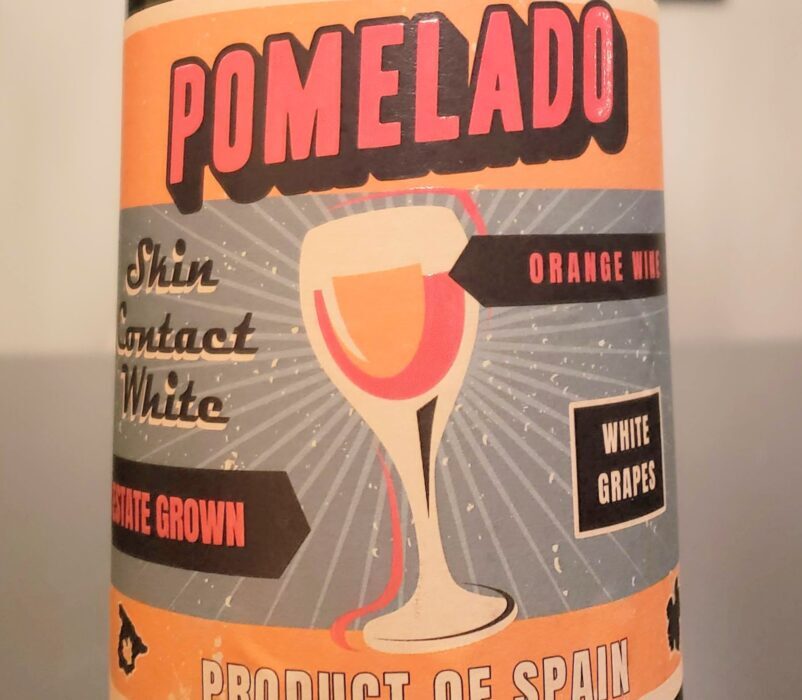Are you familiar with orange wine? For those who are curious or may not have tried it yet, here’s some general winemaking information followed by a review of Dominio de Punctum Pomelado Orange Wine 2018.
Orange wine, sometimes referred to as amber wine, is not made from oranges as some may assume. The name reflects the wine colour. To better understand orange wine, it’s useful to know some basics about how wine is made.
One of the processes in winemaking is called Maceration. This step is where crushed grapes soak with the grape skin, seeds, and stems to create what is called Must. Maceration is mostly used for red wine production. The process extracts compounds and phenols to give red wine structure through tannins, while enhancing the aroma and flavours of the wine. The pigments are extracted through the skin giving red wine its colour.
White wine, on the other hand, typically goes through very little or no maceration. White wine is most often made by fermenting only the juice released from pressing the grapes. This is why white wine tends to be lighter in structure and virtually tannin free.
Orange wine is typically natural and organic. It is made with white grapes that are fermented with the skin, and sometimes with stem and seeds, giving it a structure similar to red wine while keeping concentrated flavours and aromas associated with white grape varieties.
There are multiple style-making techniques to orange wine production giving the wine different characteristics. Some wine producers may chose to macerate the grapes with the skin for either a short or long period. Different fermentation vessels can be chosen. Oxygen exposure is often preferred which may result in nutty and dried fruit characteristics. Some may use wild yeast that leads to spontaneous fermentation, which can give more rustic characteristics as can be found in sour beer.
I’ve had the pleasure of trying different styles of orange wine. One that I have enjoyed in the past that is completely different than the wine I sampled for my full review is the Southbrook Vidal Skin Fermented Orange Wine from Ontario. This wine has citrus and tea notes. The wild yeast gives it sour beer and cider characteristics with its lighter, tart and slightly cloudy profile. Another example of a lighter and more tart orange wine is the Loveblock Orange from New Zealand with notes of orange peel, cumin and Indian spices.
The wine I tried for this review is Dominio de Punctum Pomelado Orange Wine 2018 from La Mancha, Spain, made from a Sauvignon Blanc blend.
This organic wine is visually luscious and has a beautifully rich amber colour. On the nose, it has aromas of bruised honey-crisp apple, dried apricot, walnut, orange blossom, marmalade, sweet spice, and hints of honey.
The sweet aromas do not in any way equate to a sweet wine, it is in fact bone-dry. On the palate, it is full bodied with perceivable alcohol and gentle tannins. The flavours are lemon, blood orange, walnut, and a touch of honey. It has bright acidity and a sharp nutty bitter finish.
Tasted February 2020.
Alc./Vol.: 13%
Wine-Food Pairing: This wine pairs well with curries. I enjoyed it with butter chicken. Because of the bitter finish, avoid bitter food like cilantro as the sharp flavours will only be enhanced in both the food and wine.
Score: 89
Please comment if you would like a blog that features in-depth information on the different styles of orange wine.


